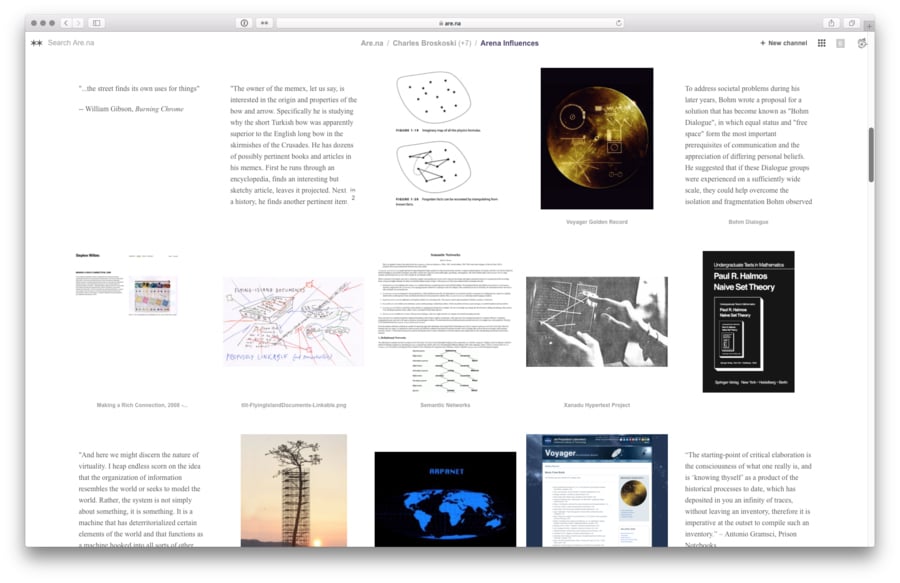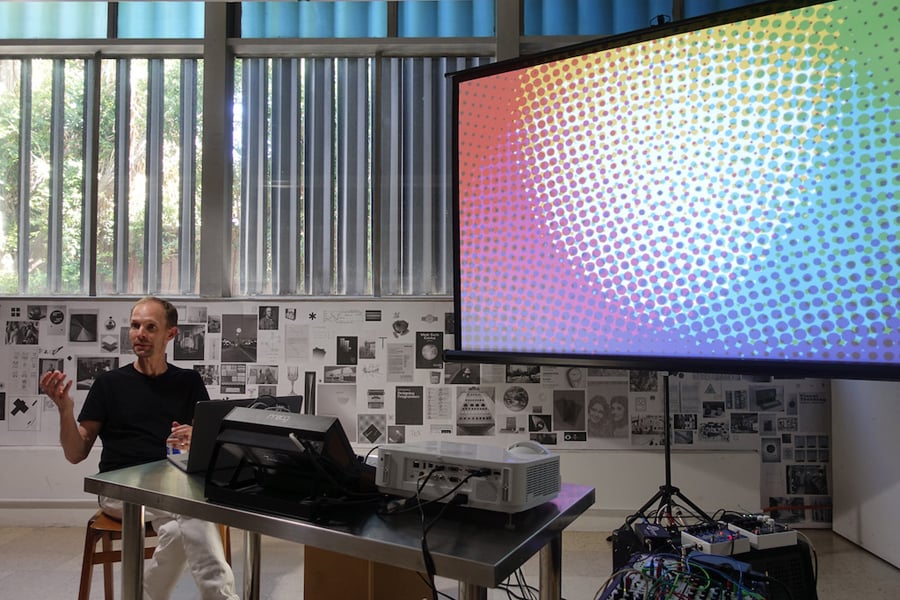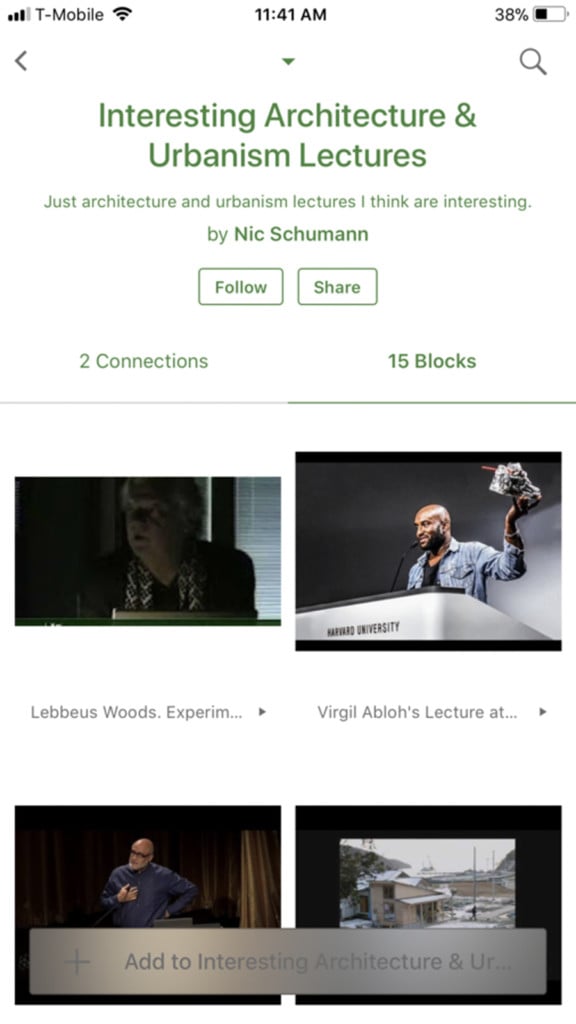
October 26, 2018
Can You Teach Good Design on a Social Media Network?
Professors at Parsons, Princeton, Yale, and MIT are using a platform called Are.na to help students collaborate without judgment and create in the public eye.

Apple has never opened up its wares to outside developers, but that hasn’t stopped graphic designer David Reinfurt from hypothesizing alternative designs for the tech giant. Last autumn, Reinfurt charged his students at Princeton University with redesigning the interface of the Apple Watch. It was an intimidating assignment, especially coming from the man who’d devised the astoundingly enduring interface of New York City’s MTA Metrocard vending machines, but Reinfurt promised to guide the students through the process. He started them off with this simple prompt, instructing them to take photographs of all the clocks around them and post the images to a social network called Are.na.
Launched in 2012 by a group of artists and designers, Are.na is a research-oriented platform sometimes described as a sophisticated Pinterest or a next-gen del.icio.us. Users—55,000 of them at last count—upload all types of content in “blocks” they use to build themed “channels” that they name and curate. The aesthetics of the platform are spare, setting up “a clean space where the content is clear and you’re not being distracted,” says Are.na co-founder Chris Barley. “It’s extremely minimal. It tends to make content look good.” In an age when design students are daily bombarded with visual mayhem on multiple platforms, Are.na offers a place to focus, library-style. But architecture and design professors like Reinfurt are also embracing it as a tool for classroom collaboration and personal curation.
Lucy Siyao Liu, an architectural designer who’s taught drawing classes at MIT, has a channel called “Thoughts Not Ready” that she keeps private. “Are.na is kind of like my brain; it’s what I’ve been thinking about lately” she says. When she’s ready to share and collaborate with her students or other pros, Liu will collect or create content for her public channels that anyone can see, follow, and even borrow from. When a user clicks “Connect” on any one block, Are.na prompts them to add that piece of content to a channel of their own. You never “like” something; instead, you add it to one of your own idea collections. That can feel counterintuitive after years of clicking simple approval icons on Facebook, Tumblr, or Instagram, but Are.na founders see it as a far more creative experience. “Liking is a YES or NO. Collecting something to one of your channels is a little bit harder on your mind,” says Barley. “You see something that resonates with something you’re working on and you make that connection.”

Design educators have experimented with social media platforms in the past, setting up class Instagram accounts and encouraging students to post under specific hashtags. But the public cross-pollination of images, PDF files, and even course syllabi on Are.na happens with much less chance that you’ll bump into pics from a student’s personal life. It also happens without number-of-follower rankings or, conspicuously, a single advertisement.
Are.na’s business plan is subscription-based—users who want unlimited channels and the privacy option pay $45/year. (Barley says Are.na has about 1,300 paying members.) The ad-free environment leaves plenty of white space in the platform’s layout, which the founders say is intentional: they want each block of content to shine. That adds a gallery-like aspect to the platform, which Liu sees as a good training ground for her students, many of whom are just starting to develop habits of documenting and presenting their own work to the world. “It’s encouraged students to have agency and curate their own work,” says Liu. “I’ve seen their research end up becoming a workbook or a poster.”
Designer Allyn Hughes was first introduced to Are.na back in 2014 by her interactive design professor at Yale, Laurel Schwulst. Now an adjunct professor herself, Hughes is using the platform with her Branding Concepts class at the Parsons School of Design this autumn (you can follow along on their class channel.) “I use it as an archival base,” says Hughes. “I’ll pull up the site in class, and it makes it really easy for me to run through 18 students’ work in three hours.”
Reinfurt is using it again with his graphic design classes this autumn at Princeton, too. “I’ve often opened class with the phrase, ‘Last week in Are.na…’,” says Reinfurt. “It inevitably triggers other conversations.”
You may also enjoy “See the Thesis Projects of Liz Diller, Daniel Libeskind, and Other Cooper Union Grads at New Exhibit.”
Recent Viewpoints
Viewpoints
Google’s Ivy Ross Makes Sense of Color








